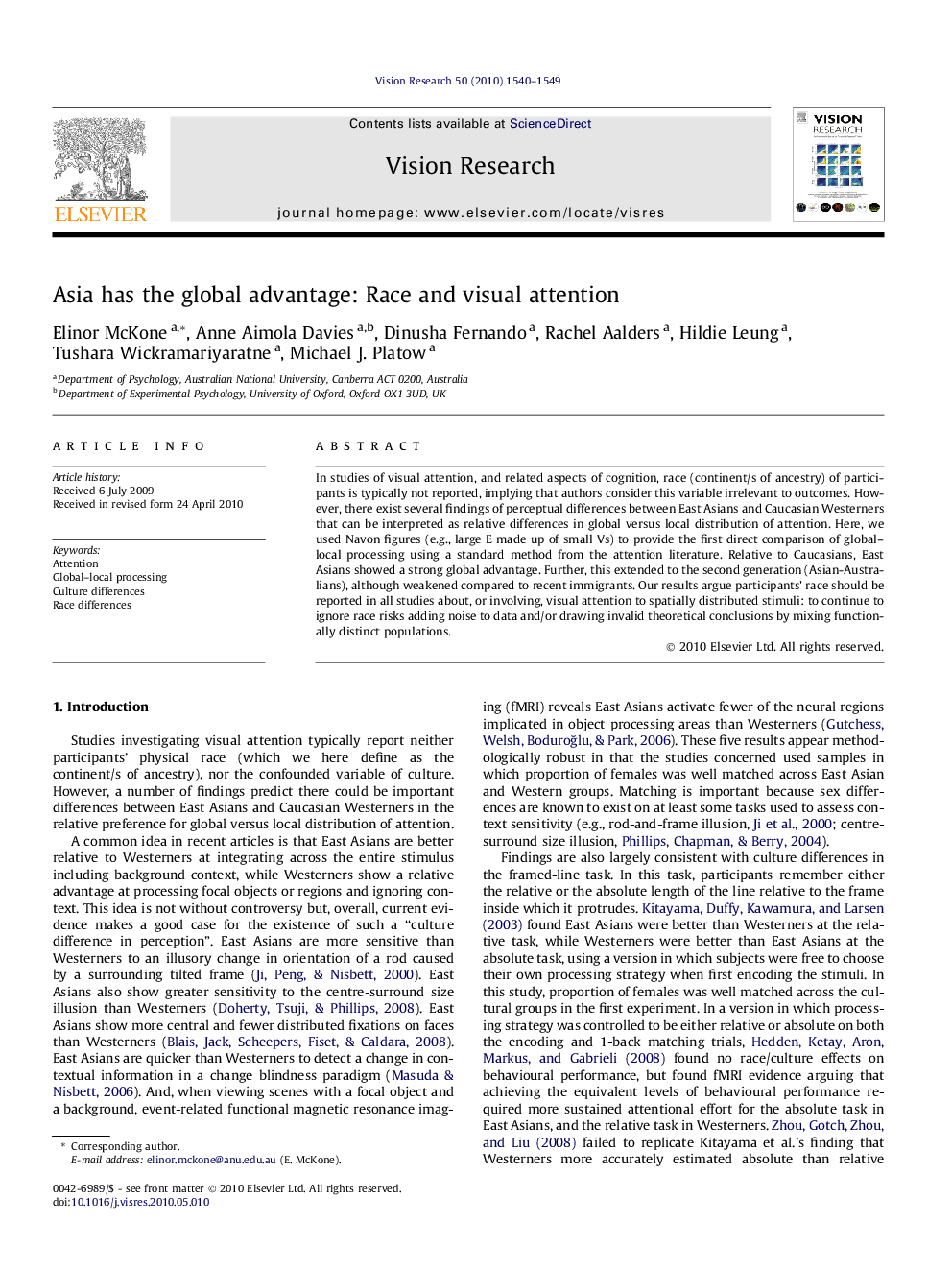| Article ID | Journal | Published Year | Pages | File Type |
|---|---|---|---|---|
| 4034572 | Vision Research | 2010 | 10 Pages |
In studies of visual attention, and related aspects of cognition, race (continent/s of ancestry) of participants is typically not reported, implying that authors consider this variable irrelevant to outcomes. However, there exist several findings of perceptual differences between East Asians and Caucasian Westerners that can be interpreted as relative differences in global versus local distribution of attention. Here, we used Navon figures (e.g., large E made up of small Vs) to provide the first direct comparison of global–local processing using a standard method from the attention literature. Relative to Caucasians, East Asians showed a strong global advantage. Further, this extended to the second generation (Asian-Australians), although weakened compared to recent immigrants. Our results argue participants’ race should be reported in all studies about, or involving, visual attention to spatially distributed stimuli: to continue to ignore race risks adding noise to data and/or drawing invalid theoretical conclusions by mixing functionally distinct populations.
